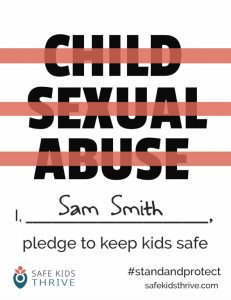Massachusetts’ Juvenile Justice System Response…
Massachusetts’ Juvenile Justice System Response to Problem Sexual Behavior by…
Home / Read the Report
For purposes of this report, the words “child” and “youth” are sometimes used interchangeably. Massachusetts law 1 on the care and protection of children defines a child as a person under the age of 18. However, when a distinction needs to be made that differentiates younger and older minors by age or developmental stage, a child is defined in this report as an individual between newborn and age 11, and a youth is defined as an individual between age 12 and the attainment of their 18th birthday.
Child maltreatment can be defined generally as any type of cruelty inflicted upon a child, including mental or emotional abuse, physical harm, neglect, sexual abuse, sexual exploitation or human trafficking (both sex trafficking and labor trafficking). It is not uncommon for a child to be the victim of several types of maltreatment at the same time. 2 All states have child abuse prevention statutes and regulations that define these basic categories, but specifics do vary. DCF regulations (110 CMR, Section 2.00) offer the following definitions of the various types of child abuse and neglect for the Commonwealth:
The non-accidental commission of any act by a caretaker upon a child under age 18 which causes, or creates a substantial risk of physical or emotional injury; or constitutes a sexual offense under the laws of the Commonwealth; or any sexual contact between a caretaker and a child under the care of that individual. This definition is not dependent upon location (i.e., abuse can occur while the child is in an out-of-home or in-home setting).
Failure by a caretaker, either deliberately or through negligence or inability, to take those actions necessary to provide a child with minimally adequate food, clothing, shelter, medical care, supervision, emotional stability and growth or other essential care; provided, however, that such inability is not due solely to inadequate economic resources or solely to the existence of a handicapping condition. This definition is not dependent upon location (i.e., neglect can occur while the child is in an out-of-home or in-home setting).
Is an impairment to or disorder of the intellectual or psychological capacity of a child as evidenced by observable and substantial reduction in the child’s ability to function within a normal range of performance and behavior.
Death, or fracture of a bone, subdural hematoma, burns, impairment of any organ, and any other such nontrivial injury; or soft tissue swelling or skin bruising, depending on such factors as the child’s age, circumstances under which the injury occurred, and the number and location of bruises; or addiction to a drug or drugs at birth; or failure to thrive.
Abuse or neglect which occurs in any facility for children, including, but not limited to, group homes, residential or public or private schools, hospitals, detention and treatment facilities, family foster care homes, group day care centers and family day care homes.
Any person under the age of 18 who has been subjected to sexual exploitation because such person:
A person who is subjected to harboring, recruitment, transportation, provision, obtaining, patronizing, or soliciting for the purpose of:
For additional information about what adults must do under the law when child maltreatment is suspected, observed or disclosed see Section 5: “Recognizing, Responding to, and Reporting Allegations and Suspicions of Child Sexual Abuse”.
1 MGL, Chapter 119, Section 21
2 Finkelhor, D., Turner, H., Hamby, S., and Ormrod, R. (2011). Polyvictimization: Children’s Exposure to Multiple Types of Violence, Crime, and Abuse. National Survey of Children’s Exposure to Violence, Office of Juvenile Justice and Delinquency Prevention, Bulletin: (https://www.ncjrs.gov/pdffiles1/ojjdp/235504.pdf)
3 as defined in MGL c. 119, § 21
4 based on MGL c. 233, § 20M and MGL c. 265, §§ 50 and 51

Join us and commit to learning how you can protect the children you serve.
Customized child sexual abuse prevention guidelines to meet the unique needs of any organization that serves children.
Safe Kids Thrive is managed by the Children's Trust of Massachusetts
Learning Center Registration
Sign up for an account and start your learning experience.
Free Online Assessment
Let us help you find out where to start.
